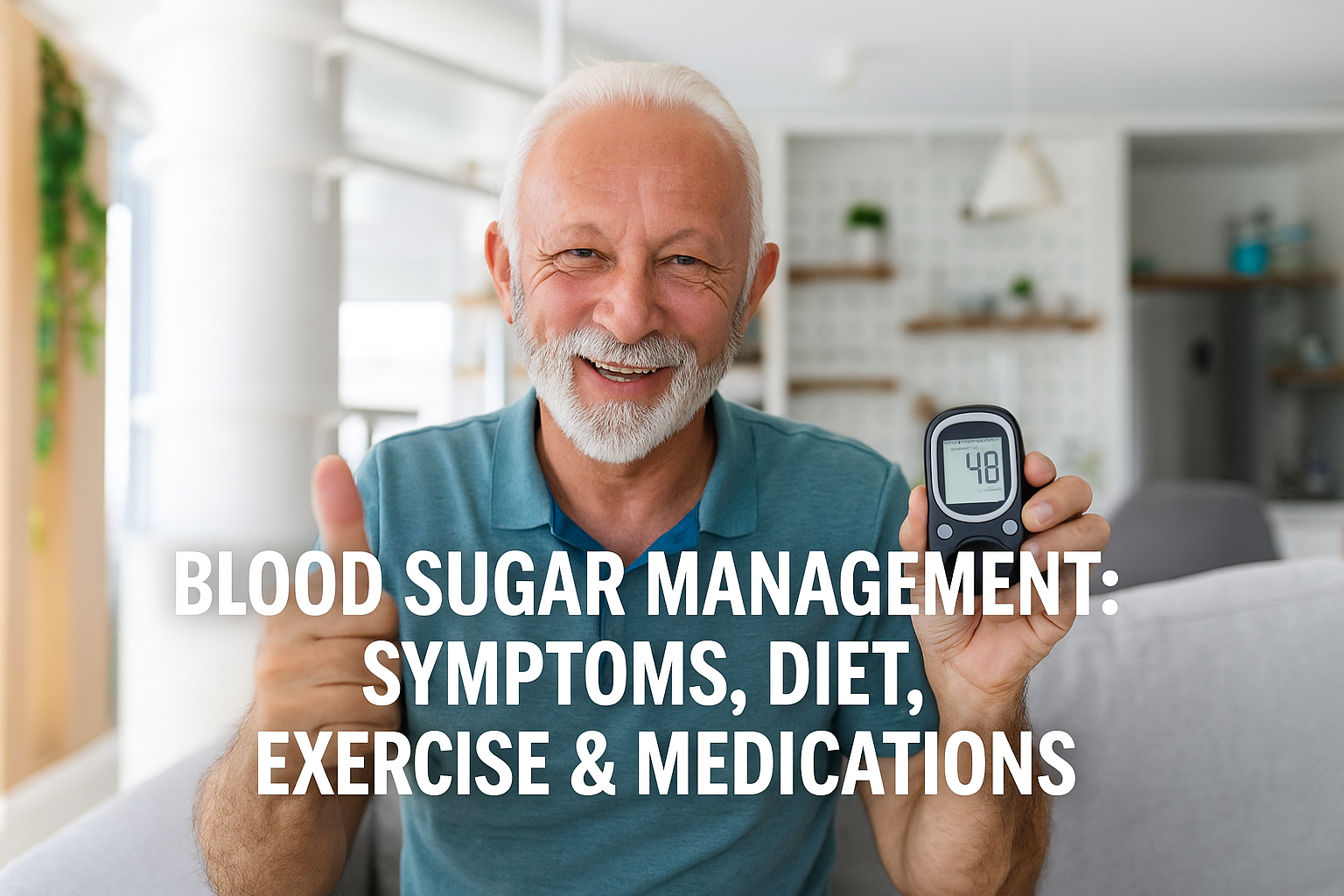1. What is a Normal Blood Sugar Level, and How Can I Keep It Stable?
Normal blood sugar levels vary slightly depending on the timing of the measurement. For most healthy adults:
Fasting blood sugar (after 8+ hours without food): 70 to 99 mg/dL
Postprandial (1-2 hours after meals): Less than 140 mg/dL
Hemoglobin A1C (average over 2-3 months): Below 5.7% is considered normal; 5.7% to 6.4% indicates prediabetes, and 6.5% or higher suggests diabetes.
Tips to Keep Blood Sugar Stable:
Eat regular meals, including a balance of protein, fiber, and healthy fats.
Avoid sugary snacks and processed carbohydrates.
Engage in regular physical activity.
Manage stress and get enough sleep.
Monitor blood sugar if advised by your healthcare provider.
2. What Foods Help Lower Blood Sugar Quickly and Naturally?
While food cannot replace medical treatment, certain options may help lower blood sugar naturally:
Cinnamon: May increase insulin sensitivity.
Apple cider vinegar: Can improve insulin function when taken before meals.
Leafy greens (like spinach and kale): Low in carbs and high in fiber.
Whole grains (like oats and barley): Slow-releasing carbohydrates that reduce spikes.
Chia seeds and flaxseeds: High in fiber and omega-3s.
Berries: Rich in antioxidants and fiber.
Drinking water, taking a short walk after meals, and reducing portion sizes can also assist in lowering high readings.
3. What Are the Symptoms of High Blood Sugar (Hyperglycemia) and Low Blood Sugar (Hypoglycemia)?
Hyperglycemia (High Blood Sugar):
Frequent urination
Increased thirst
Fatigue
Blurred vision
Headaches
Slow healing of cuts and wounds
Hypoglycemia (Low Blood Sugar):
Shakiness
Dizziness
Sweating
Hunger
Confusion or irritability
Rapid heartbeat
In severe cases: fainting or seizures
Early detection and management are key to preventing complications. Always consult a healthcare professional if symptoms persist.
4. How Does Exercise Affect Blood Sugar Levels?
Exercise is a powerful tool for blood sugar control. It increases insulin sensitivity and allows muscles to use glucose for energy:
Aerobic exercises (like walking, swimming, or biking): Help lower blood glucose levels during and after activity.
Resistance training (like weightlifting): Improves insulin function over time.
Short walks after meals: Can prevent post-meal spikes.
It’s important to monitor blood sugar before and after workouts, especially for people with diabetes on medication, to avoid hypoglycemia.
5. What Medications or Supplements Are Best for Controlling Blood Sugar?
Medications:
Metformin: First-line drug for type 2 diabetes.
Insulin: Used for type 1 diabetes and sometimes for type 2.
GLP-1 receptor agonists, SGLT2 inhibitors, and DPP-4 inhibitors: Other options that may be prescribed based on individual needs.
Supplements (consult your doctor before use):
>> Best Supplement To Control Blood Sugar Level is SUGAR DEFENDER.
>>> Read Full Article Here About SUGAR DEFENDER No #1 Blood Sugar Control Formula!
6. Can I Control My Blood Sugar Without Medication?
Yes, many individuals manage blood sugar effectively through lifestyle changes:
Diet: Focus on whole, unprocessed foods, low-glycemic fruits, lean protein, and healthy fats.
Exercise: Aim for 150 minutes of moderate activity per week.
Weight Loss: Losing even 5-10% of body weight can improve blood sugar.
Stress Management: Meditation, yoga, or deep breathing can help reduce glucose spikes.
Sleep: Aim for 7-9 hours per night, as poor sleep can worsen insulin resistance.
Always work with your healthcare provider before making any major changes, especially if you’re on medications.

